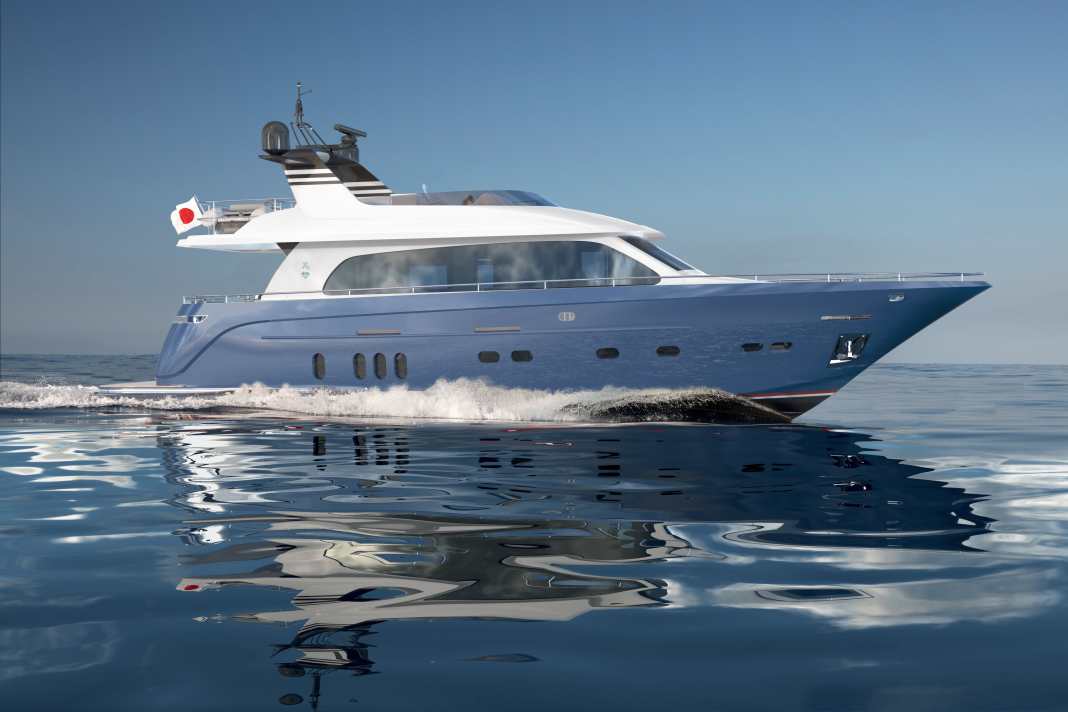Van der Valk "Micama": 21 metre custom design for Japan






The owner plans to sail the "Micama" from Tokyo to the Ogasawara Islands. They are also known in Japan as the Southern Islands and consist of several widely scattered archipelagos. The distance from the bay of Tokyo to the inhabited Main island Chichi-Jima at the edge of the Philippine Sea, more than 500 kilometres. The southernmost point of the country, the uninhabited atoll of Okinotorishima, is also included. All connections lead across the open ocean.
New regulations especially for "Micama"
Although there were previously regulations in Japan for commercial shipping travelling on the high seas, there were no such regulations for pleasure craft such as motor yachts. These first had to be created for "Micama" so that Van der Valk could incorporate them into the design. The new guidelines primarily related to safety and seaworthiness. These included construction, stability and buoyancy.
It was a big task for Van der Valk," explains Managing Director Bram Kooltjes. "Communication was crucial, as all the insurance requirements had to be met at the same time.
To achieve this, Van der Valk integrated a second, watertight bulkhead in the living area, for example. There was also a watertight door in the corridor: "You normally only see this on a superyacht of 300 tonnes or more," says Kooltjes. The calculation and construction of the aluminium hull alone took months.
Owner's specifications for Van der Valk
Also important in the design of "Micamo" was the owner's desire to be able to steer his yacht himself over longer periods of time, together with the associated consequences for the layout. For example, the wheelhouse had to be kept free of distracting reflections to enable long night-time passages. Van der Valk also redesigned the deckhouse compared to its own previous flybridge models of a similar size.
The owner wanted the rooms to feel as open as possible, which we supported with a colour palette that makes the most of the natural light from the large windows," explains Guido de Groot, who is responsible for the interior design.
Natural accents, such as natural stone or green plants, reinforce the soft colour scheme and the fusion of European and Asian influences. The Japanese bathtub in the owner's cabin is also unique for a yacht built in the Netherlands.
A new market for Van der Valk
According to Van der Valk, the Japanese market has so far been dominated by sailing yachts and wooden motorboats. All the more reason to hope that "Micama" could become a showcase project for Dutch craftsmanship, especially when it is presented to the wider public - for example at the Tokyo Boat Show.
Technical data:
- Shipyard:Van der Valk Shipyard (Netherlands)
- Length: 21,27 m
- Width: 5,25 m
- Displacement:50 t
- CE category: A
- Drive: 2 x Volvo Penta IPS-1350 (1000 hp each)
- Maximum speed:29.5 kn
- travelling speed:23 kn
- Fuel (tank capacity): 4500 l
- Cabins: 4 (1 owner, 3 guest)
